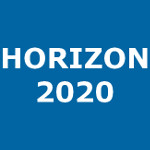Automatic assessment of the 2-minute walk distance for remote monitoring of people with multiple sclerosis
Kontaxis, Spyridon (Universidad de Zaragoza) ; Laporta, Estela ; Garcia, Esther ; Martinis, Matteo ; Leocani, Letizia ; Roselli, Lucia ; Buron, Mathias Due ; Guerrero, Ana Isabel ; Zabala, Ana ; Cummins, Nicholas ; Vairavan, Srinivasan ; Hotopf, Matthew ; Dobson, Richard J. B. ; Narayan, Vaibhav A. ; La Porta, Maria Libera ; Costa, Gloria Dalla ; Magyari, Melinda ; Sørensen, Per Soelberg ; Nos, Carlos ; Bailon, Raquel (Universidad de Zaragoza) ; Comi, Giancarlo
Resumen: The aim of this study was to investigate the feasibility of automatically assessing the 2-Minute Walk Distance (2MWD) for monitoring people with multiple sclerosis (pwMS). For 154 pwMS, MS-related clinical outcomes as well as the 2MWDs as evaluated by clinicians and derived from accelerometer data were collected from a total of 323 periodic clinical visits. Accelerometer data from a wearable device during 100 home-based 2MWD assessments were also acquired. The error in estimating the 2MWD was validated for walk tests performed at hospital, and then the correlation (r) between clinical outcomes and home-based 2MWD assessments was evaluated. Robust performance in estimating the 2MWD from the wearable device was obtained, yielding an error of less than 10% in about two-thirds of clinical visits. Correlation analysis showed that there is a strong association between the actual and the estimated 2MWD obtained either at hospital (r = 0.71) or at home (r = 0.58). Furthermore, the estimated 2MWD exhibits moderate-to-strong correlation with various MS-related clinical outcomes, including disability and fatigue severity scores. Automatic assessment of the 2MWD in pwMS is feasible with the usage of a consumer-friendly wearable device in clinical and non-clinical settings. Wearable devices can also enhance the assessment of MS-related clinical outcomes.
Idioma: Inglés
DOI: 10.3390/s23136017
Año: 2023
Publicado en: Sensors 23, 13 (2023), 6017 [11 pp.]
ISSN: 1424-8220
Factor impacto JCR: 3.4 (2023)
Categ. JCR: CHEMISTRY, ANALYTICAL rank: 34 / 106 = 0.321 (2023) - Q2 - T1
Categ. JCR: INSTRUMENTS & INSTRUMENTATION rank: 24 / 76 = 0.316 (2023) - Q2 - T1
Categ. JCR: ENGINEERING, ELECTRICAL & ELECTRONIC rank: 122 / 353 = 0.346 (2023) - Q2 - T2
Factor impacto CITESCORE: 7.3 - Instrumentation (Q1) - Information Systems (Q1) - Electrical and Electronic Engineering (Q1) - Analytical Chemistry (Q1) - Atomic and Molecular Physics, and Optics (Q1) - Biochemistry (Q2)
Factor impacto SCIMAGO: 0.786 - Instrumentation (Q1) - Analytical Chemistry (Q1) - Atomic and Molecular Physics, and Optics (Q1) - Information Systems (Q2) - Medicine (miscellaneous) (Q2) - Biochemistry (Q2) - Electrical and Electronic Engineering (Q2)
Financiación: info:eu-repo/grantAgreement/ES/DGA/T39-23R
Financiación: info:eu-repo/grantAgreement/EC/H2020/115902/EU/Remote Assessment of Disease and Relapse in Central Nervous System Disorders/RADAR-CNS
Financiación: info:eu-repo/grantAgreement/EUR/MICINN/TED2021-131106B-I00
Tipo y forma: Article (Published version)
Área (Departamento): Área Teoría Señal y Comunicac. (Dpto. Ingeniería Electrón.Com.)
 You must give appropriate credit, provide a link to the license, and indicate if changes were made. You may do so in any reasonable manner, but not in any way that suggests the licensor endorses you or your use.
You must give appropriate credit, provide a link to the license, and indicate if changes were made. You may do so in any reasonable manner, but not in any way that suggests the licensor endorses you or your use.
Exportado de SIDERAL (2024-11-22-12:09:32)
Visitas y descargas
Idioma: Inglés
DOI: 10.3390/s23136017
Año: 2023
Publicado en: Sensors 23, 13 (2023), 6017 [11 pp.]
ISSN: 1424-8220
Factor impacto JCR: 3.4 (2023)
Categ. JCR: CHEMISTRY, ANALYTICAL rank: 34 / 106 = 0.321 (2023) - Q2 - T1
Categ. JCR: INSTRUMENTS & INSTRUMENTATION rank: 24 / 76 = 0.316 (2023) - Q2 - T1
Categ. JCR: ENGINEERING, ELECTRICAL & ELECTRONIC rank: 122 / 353 = 0.346 (2023) - Q2 - T2
Factor impacto CITESCORE: 7.3 - Instrumentation (Q1) - Information Systems (Q1) - Electrical and Electronic Engineering (Q1) - Analytical Chemistry (Q1) - Atomic and Molecular Physics, and Optics (Q1) - Biochemistry (Q2)
Factor impacto SCIMAGO: 0.786 - Instrumentation (Q1) - Analytical Chemistry (Q1) - Atomic and Molecular Physics, and Optics (Q1) - Information Systems (Q2) - Medicine (miscellaneous) (Q2) - Biochemistry (Q2) - Electrical and Electronic Engineering (Q2)
Financiación: info:eu-repo/grantAgreement/ES/DGA/T39-23R
Financiación: info:eu-repo/grantAgreement/EC/H2020/115902/EU/Remote Assessment of Disease and Relapse in Central Nervous System Disorders/RADAR-CNS
Financiación: info:eu-repo/grantAgreement/EUR/MICINN/TED2021-131106B-I00
Tipo y forma: Article (Published version)
Área (Departamento): Área Teoría Señal y Comunicac. (Dpto. Ingeniería Electrón.Com.)
Exportado de SIDERAL (2024-11-22-12:09:32)
Permalink:
Visitas y descargas
Este artículo se encuentra en las siguientes colecciones:
Articles > Artículos por área > Teoría de la Señal y Comunicaciones
Record created 2023-07-28, last modified 2024-11-25
